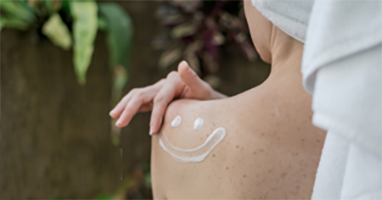May is Skin Cancer Awareness Month. Whether you’re into hiking, biking, tennis, bocce ball, or just kicking back at a Twins game, as the days get longer and warmer, we look for any excuse we can find to get outside. That’s great for your physical health and mental well-being, but it also comes with its own set of risk factors.
At the risk of oversimplification, here are the basic facts:
- Skin cancer is the most common cancer in the U.S. As many as 1 in 5 Americans will be diagnosed with skin cancer before their 70th birthday.
- Basal cell carcinoma (BCC), which attacks the epidermis, or outer layer of skin, is the most common form of skin cancer with 3.6 million diagnosed cases in the U.S. every year.
- Melanoma, which attacks the skin cells that produce melanin to give your skin its color, is the most dangerous form of skin cancer, with over 7,500 deaths in the U.S. every year.
- The vast majority of BCCs and melanoma have the same root cause: Ultraviolet (UV) radiation from the sun or a tanning bed.
First off, don’t use a tanning bed. Ever. The risk simply isn’t worth it. One landmark study found that using a tanning bed before age 35 increases your risk of getting melanoma by 75 percent. In the short run, you may think you look good. In the long run, you’re substantially increasing your risk.
Second, and more importantly, skin cancer is one of the most preventable cancers—especially if it’s caught early—and there are many simple things you can do to cut down your risk factors. Here are some of the easiest and most common.
-
Avoid the midday sun.
The sun’s UV rays are the strongest between the hours of 10 am and 4 pm, which is when you’re likely to be out and about. If possible, plan your activities for the morning or evening.
-
Seek shade when and where you can.
Hanging out in the shade is cool. Literally. You won’t overheat and you’ll be protected from the sun’s UV rays.
-
Cover up.
Not showing skin doesn’t make you a prude. It makes you health conscious and smart. Darker colors are more protective, as are tightly woven fabrics. These days, lots of manufacturers even make clothes with built-in sun protection.
-
Slather on the sunscreen.
You know this one already, but here are some important tips.
- Look for an SPF of 30 or higher.
- Apply your sunscreen about 15 minutes before you get out in the sun.
- Don’t forget the tricky spots. Your scalp, the tops of your ears, the back of your neck, even the tops of your feet. Protect your entire body, not just your arms, legs, and torso.
- Remember to reapply often. Your sunscreen isn’t made to last the entire day. Johns Hopkins recommends reapplication every two hours, especially if you’re swimming or sweating.
-
Don’t try to get a tan.
Tanning is your body’s way of trying to protect itself, but it isn’t a good one. Experts estimate that a “base tan” will give you the equivalent of an SPF between 2-4. As Harvard Medical Publishing notes, that’s better than nothing, but there’s a reason you don’t see products with SPFs in the single digits. Even the slightest suntan can result in skin damage, and that skin damage increases your risk of skin cancer.
-
Protect yourself every day.
BCCs and melanoma are often caused by a combination of intense exposure (aka sunburn) and cumulative, long-term damage. Every time you mow the lawn, walk your dog or go for a bike ride without sun protection you could be damaging your skin. The effects add up over time and raise your chances of getting skin cancer. Even if you think you’ll only be outside briefly, it’s worth taking a minute to better protect yourself.
-
Get an annual skin cancer screening.
According to the National Library of Medicine,full-body, professional skin cancer screening has the potential to detect early precancerous lesions and may ultimately be important in reducing melanoma mortality. If you have had excessive sun exposure at a young age, one of the best things you can do is have a healthcare provider look you over from head to toe on a yearly basis. They will pay close attention to hard-to-see spots like your scalp, back and buttocks, behind your ears, and even between your toes.
It’s important to remember that other than living in a cave, there isn’t one surefire method of protecting yourself from the sun’s harmful UV rays. From a big floppy hat to sunscreen, it’s important to use every tool in the tool kit.
With the sun at its highest point of the year, the average UV Index for a summer day in Minnesota typically ranges from 8 to 10. For reference, that’s about the same as Miami during spring break. It is also the same range the EPA deems very high. As they further note, “unprotected skin will be damaged and can burn very quickly.” The Minnesota summer may be all too brief, but it can also be pretty intense. Take precautions now to protect your future self.
Early detection is the best and least invasive way to treat skin cancer, with the highest chance of a cure. Contact The Good Clinic today to make an appointment for your full-body scan.

